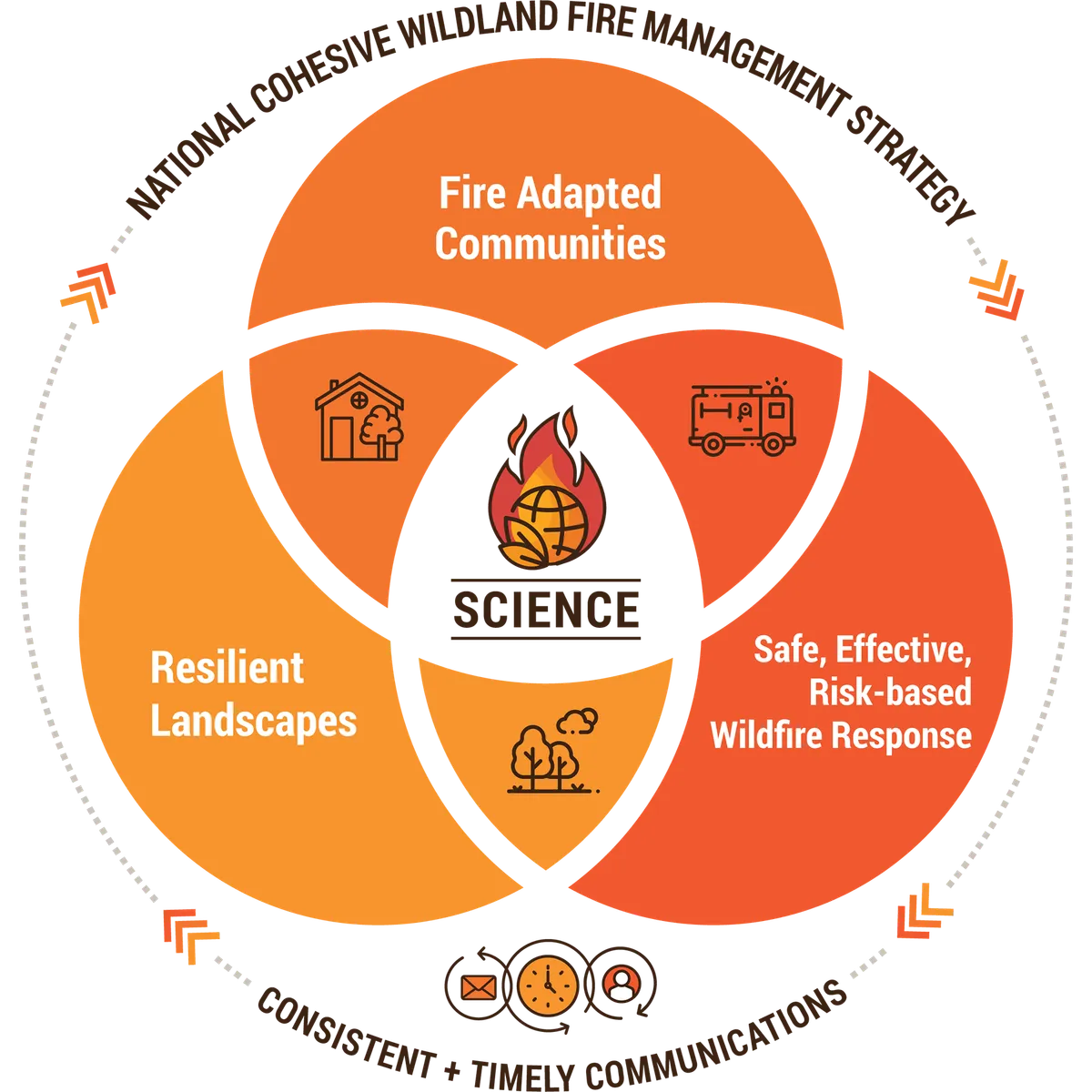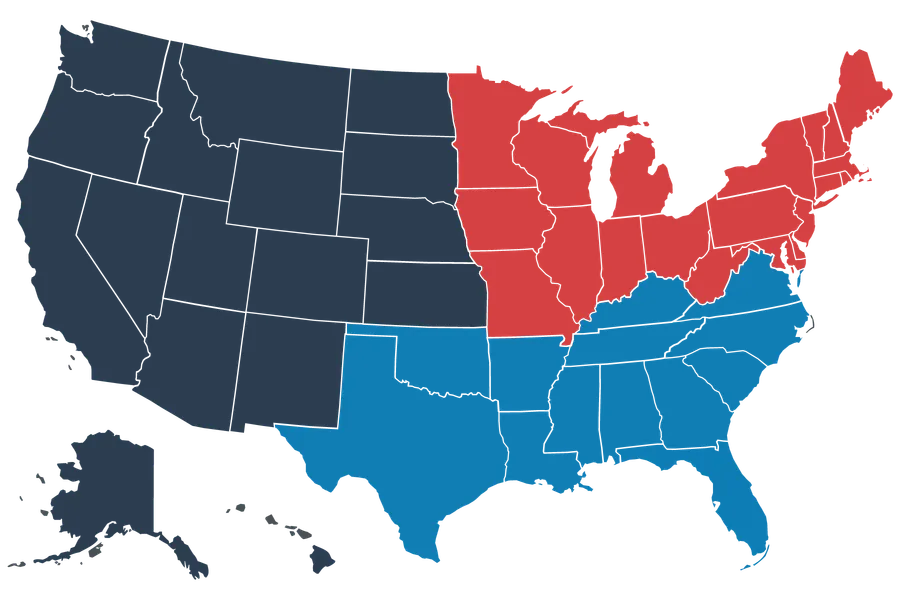The 2009 Federal Land Assistance, Management and Enhancement (FLAME) Act directed the development of the National Cohesive Wildland Fire Management Strategy by the federal government. The finalized/updated January 2023 vision of the strategy is, “To safely and effectively extinguish fire, when needed; use fire where allowable; manage our natural resources; and collectively, learn to live with wildland fire.”
Today, the strategy serves as the key framework for addressing wildland fire challenges across the nation. With the growing wildfire threat over the past 20 years, the Wildland Fire Leadership Council, in which the U.S. Fire Administration (USFA) participates, continues to serve as the key leadership body to adapt and implement policies that address the challenges of wildland fire now and for years to come. USFA continuously and fervently advocates for the Cohesive Strategy to address wildfire that impacts communities, not just the wildland areas. The strategy:
- Establishes a national vision for wildland fire management. This national vision must include the impact of fire on communities.
- Defines 3 national goals.
- Describes the wildland fire challenges. This strategy must also address the challenges of wildfire in communities.
- Identifies opportunities to reduce wildfire risks. This strategy must also identify opportunities to reduce wildfire risk in communities. Mitigation and resilience building methods and tasks are different for these 2 different land areas.
- Establishes national priorities focused on achieving the national goals.
The Cohesive Strategy was updated in May 2023 by an addendum to address 4 important ideas that were not addressed in depth in the 2014 strategy. These include:
- The impacts of climate change, including the increasing frequency and intensity of storms bringing severe wind and flood events, longer sustained periods of extreme heat and drought that establish the conditions for wildfire, and the overall change in the baseline risks of communities across the nation.
- Workforce capacity, health and well-being inclusive of local, tribe, state and federal fire service and partner communities of practice.
- Community resilience (preparation, response, recovery and mitigation) in the built environment including adoption of strong building codes.
- Diversity, equity, inclusion and environmental justice.
5 key implementation challenges were also identified by the addendum:
- The existing wildland fire management system has not kept pace with demands.
The lack of wildland management can and will encroach on communities adjacent to or intermixed with the wildland or forested areas. - There is still a need for the significant increase in the proactive use of fire (prescribed and managed wildfire for resource objectives) across the country.
- Science, data and technology has not kept pace with the extent of wildland fire and post-fire impacts, or been fully integrated into decision-making for fire, land and community managers.
The same statement applies to communities and built environment adjacent to or intermixed with the wildland and forested areas. - Markets, infrastructure and skilled human resource capacity are inadequate to utilize biomass and other wood products from ecosystem management or hazardous fuel treatments.
- Education, communications and marketing are insufficient to inform stakeholders and decision-makers about Cohesive Strategy implementation.
Strategy goals
The National Cohesive Wildland Fire Management Strategy encourages everyone to work together using the best management practices and good research to make progress in 3 main goals:
- Resilient landscapes: Landscapes, regardless of jurisdictional boundaries, are resilient to fire, insect, disease, invasive species and climate change disturbances, in accordance with management objectives.
- Fire-adapted communities: Human populations and infrastructure are as prepared as possible to receive, respond to and recover from wildland fire (that impacts communities).
- Safe and effective risk-based wildfire response: All jurisdictions, responding in all land types, participate in making and implementing safe, effective and efficient risk-based wildfire management decisions.

3 national regions help to coordinate efforts: the Northeast, the Southeast and the West.
For information about how your fire department can participate, contact your regional committee or the USFA Wildfire Policy Branch.

- West Region
- Southeast Region
- Northeast Region
Action items for fire departments
- Help your jurisdiction create a Community Wildfire Protection Plan.
- Inform residents about wildfire hazards and define steps (mitigation activities) they can take to reduce the risk of loss to people, homes, businesses, infrastructure, etc.
- Work collaboratively with land management agencies to create resilient landscapes.
- Provide guidance to resident leaders to develop fire-adapted communities that are more resilient in the event of a wildfire.
- Learn about, acquire and deploy new firefighting technologies and strategies to respond to wildfire.
- Ensure that fire service personnel responding to wildfires have adequate training and equipment.
